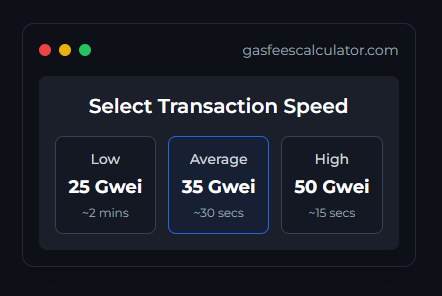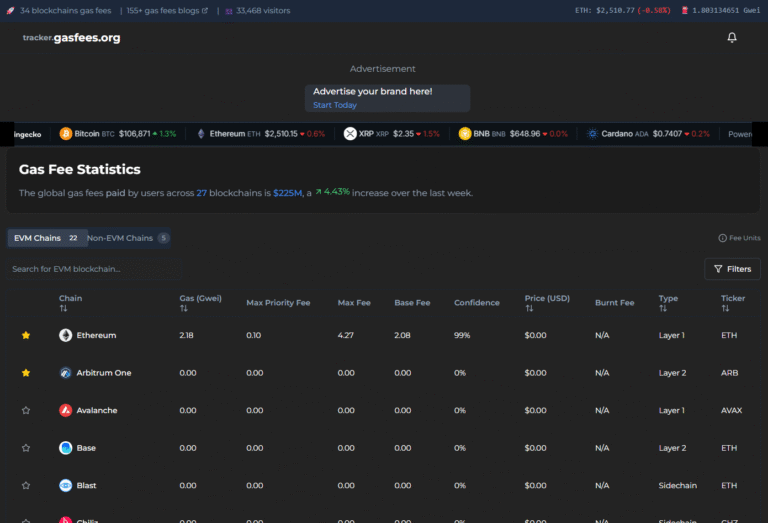Nano Gas Fees Explained: Low-Cost Blockchain Transactions
In blockchain technology, transaction fees—commonly known as gas fees—play a pivotal role in maintaining network operations and user interactions.
As blockchain adoption expands, high gas fees on major networks like Ethereum have become a growing concern, especially for users making small or frequent transactions.
This has sparked demand for more affordable, efficient, and scalable alternatives. One such emerging solution is the concept of nano gas fees.
In this blog, we’ll explore what nano gas fees are, how they work, and why they could transform the blockchain ecosystem.
What Are Gas Fees?
Gas fees are payments made by users to compensate for the computational power required to process and validate blockchain transactions. These fees:
Incentivize Validators by rewarding them for maintaining and securing the network.
Deter Spam by making it costly to flood the network with junk transactions.
Prioritize Resources by encouraging users to pay more to get their transactions processed faster.
However, high gas fees can make blockchain usage expensive and impractical—particularly during times of congestion. This limits accessibility and slows broader adoption.
Introducing Nano Gas Fees
Nano gas fees refer to transaction costs that are extremely small—often fractions of a cent. These negligible fees are possible through innovations like high-throughput layer-1 networks, energy-efficient consensus mechanisms, and layer-2 scaling solutions.
The term “nano” comes from the metric prefix for one-billionth (10⁻⁹), reflecting just how minimal these costs are. By drastically reducing fees, nano gas fee systems aim to support everything from microtransactions to large-scale dApps, without sacrificing decentralization or security.
How Nano Gas Fees Work
Nano-level transaction fees are made possible through several key blockchain innovations:
1. Layer-2 Solutions: Rollups (like Arbitrum and Optimism) and state channels bundle transactions off-chain and post compressed data to the main chain. This reduces load and dramatically cuts costs.
2. High-Throughput Layer-1s: Chains like Solana, Avalanche, and Algorand use unique consensus mechanisms (e.g., Proof of History, Pure Proof of Stake) to process thousands of transactions per second (TPS), reducing congestion and fees.
3. Sharding: By dividing the network into smaller “shards” that operate in parallel, blockchains can process more transactions simultaneously—another path to lower fees.
4. Efficient Consensus Mechanisms: Energy-efficient models like Proof of Stake use far less power than Proof of Work systems, enabling cheaper and faster transactions.
5. Fee Market Optimization: Upgrades like Ethereum’s EIP-1559 help stabilize fees by dynamically adjusting base costs, while some newer chains opt for fixed or capped fee structures.
Key Benefits of Nano Gas Fees
Nano gas fees offer several compelling advantages:
Increased Accessibility: With near-zero costs, users worldwide—especially in emerging markets—can participate in blockchain applications.
Microtransaction Viability: Enables new use cases like pay-per-use APIs, content tipping, and in-game transactions.
Better User Experience: Predictable and low fees remove a major friction point for both developers and end-users.
Environmental Sustainability: Many nano fee systems are built on green consensus mechanisms that reduce energy consumption.
Scalability: Networks that support nano gas fees are often capable of handling massive user volumes without compromising performance.
Trade-Offs and Challenges
Despite their appeal, nano gas fees come with certain trade-offs:
Decentralization Risks: Some high-throughput systems may compromise on validator diversity.
Validator Incentives: Lower fees can reduce revenue for node operators unless balanced with other rewards.
Adoption Barriers: Switching to new chains or L2s can create learning curves and compatibility issues.
Interoperability: Solutions that offer nano fees may not yet integrate seamlessly with major blockchain ecosystems.
Real-World Examples
Several blockchain projects are already embracing nano gas fees:
Solana: Often cited for its speed and sub-cent fees, ideal for dApps with high transaction volumes.
Arbitrum & Optimism: Ethereum rollups offering transaction fees often under a penny.
Algorand: Features predictable, low-cost fees around $0.001 per transaction.
Nano (XNO): Uses a block-lattice design to enable feeless, fast payments—an early pioneer in the ultra-low-cost space.
The Road Ahead
As blockchain infrastructure matures, nano gas fees are likely to become the norm rather than the exception. Ethereum’s scaling roadmap, growing L2 ecosystems, and the rise of efficient layer-1s all signal a shift toward affordable blockchain transactions.
Ultimately, nano gas fees align with the Web3 vision of a more decentralized, inclusive, and user-friendly internet. They can remove financial barriers, empower creators, and make blockchain apps competitive with centralized platforms like PayPal or Visa.
Conclusion
Nano gas fees represent more than just lower costs—they’re a gateway to widespread blockchain adoption. By minimizing friction and maximizing efficiency, they set the stage for the next evolution in decentralized technology. As adoption grows, expect nano gas fees to play a key role in shaping the blockchain networks of tomorrow.




